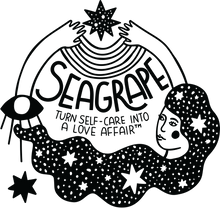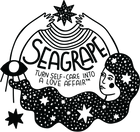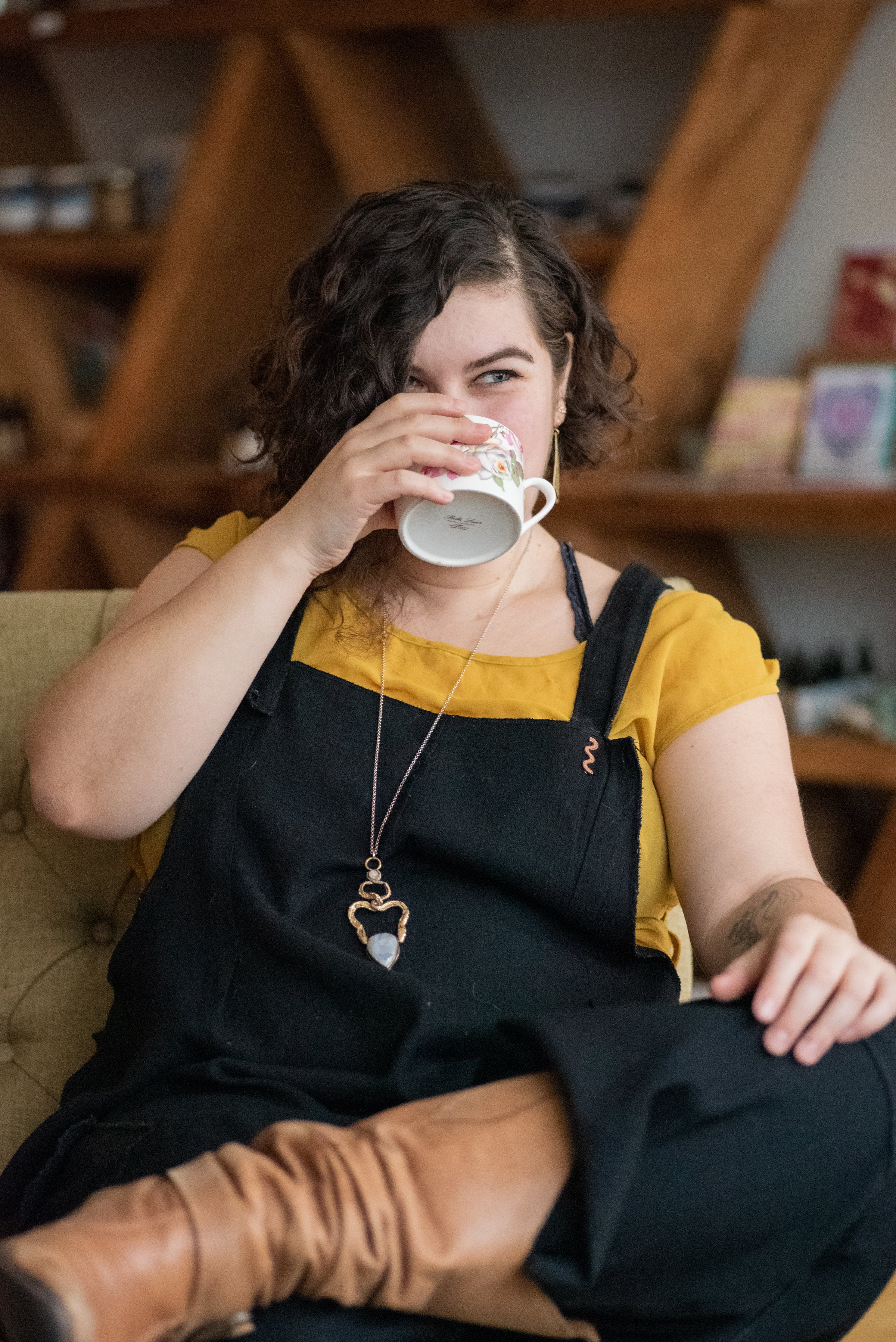Guest Blog: Plants and Flower Essences for Ancestral Healing by Lisa Fazio
Don't miss Lisa's upcoming workshop "Italian Folk Medicine: History & Modern Methodologies" on 11/21/21 at 2pm PST via Zoom, accessible worldwide!
My time spent working with the people, plants, and their relationship has led me far beyond the first few steps I took with my plant ID books into the fields and forests. This is because plants are like that. And nature is like that.
They invite us into a system, a network, a community, or more accurately, they make us aware that we’re already in one.
I often imagine it like a scene from Alice in Wonderland; I bend down to sniff a flower or to observe a leaf and match-up the vein pattern with the picture in my book and the next thing you know, as I go to simply harvest a couple of buds, an entire nation of roots, plants, seeds, and trees, jump into my gathering basket all talking at once and demanding I make them into tea. Or, paradoxically, I’m pulled into the world and wonders of the soils. Making relationships with plants can lead us into unexpected places.
One of those places, for me, has actually been less of a place and more of a practice. My ongoing contact and exchange with the healing plants has pulled me profoundly into the blood threaded web of my own ancestors and the traditional practices of ancestor veneration that was present in some way within all cultures on Earth. I believe this to be even more than a practice but also a human instinctive drive or impulse that we have been disconnected from. Especially those of us who belong to one or more of the cultural diasporas that have lost place, family, and community based traditions due to colonialism, forced emigration, genocide, and the promise of something better on the horizon (that’s pretty much everyone at this point).
I also believe that, for those of us descended from Europe, our reclamation of our connection to our ancestors and original homelands is an act of transformative justice. When we know who we are, where we are from, and what our relationship is to where we live we can begin to acknowledge our complicity in oppressive and violent colonial systems and recognize our own inherited and intrinsic wealth of medicine and magic. This mitigates and deconstructs the habitual and conditioned impulse to culturally appropriate and colonize the medicine and magic of others and informs the regeneration of authentic and just belonging, place-making, and cultural emergence.
Herbal medicine and plant magick are tools for ancestral reclamation and worship.
And they are folk healing arts that are accessible to everyone as plants were a focal component of every society in the world at one time. The mere physical act of gathering is an instinct; our arms reaching, how the eye first grabs the berry and then the fingers wrap around to grasp it, the feeling of how our muscles rejoice in the sensation of the “pick.” Our bodies know these actions in each and every cell. One of the first behaviors exhibited by babies is reaching, grabbing, and put things in their mouths. We don’t have to be taught how to do this and the very act of doing it not only cultivates muscle tone and memory, but also activates our genetic memory that was left to us by our ancestors.
Along with our instinctive muscle fiber firings, our sense of taste, touch, and smell is embedded with genetic information that recognizes the flavor and scent of the same plants our ancestors tasted, touched, and smelled. In this way, when we work with the healing plants, we come in contact with our own lineage. And when we work with and meet new plants, we are beginning one.
This is why it is so important to approach all plants with reverence and respect, and if we’re settlers, honor and restraint when it comes to endangered (or any) native plants that belong to the lineage of indigenous people and to which those same people share an ancestral genetic matrix.
For settlers, the conscious recognition and acceptance of our relationship with place that includes the ancestral relationship between people and plants is what allows us to connect in integrity and understanding with the plants of the land we inhabit and moves us closer to right alignment with true belonging.
Coming into contact with our ancestors and cultural lineage, whether it happens through working with plants or any other manner, often elicits a distant but profound longing within us. Ancestor veneration is itself another instinctive human behavior that all of our original people once embodied as a living part of daily life, regular ritual, and sacred celebration. In traditional communities, a person’s sense of self and their understanding of the world was weft to their relationship with both their genetic and cultural ancestors. We now know through scientific research that the events, circumstances, and experiences our ancestors had are encoded in our DNA.
Genetic researchers have known for a long time that this is true but didn’t understand how. The below study on mice begins to explain the physiological process. The grandparent mice were exposed and trained to fear actephenone and the F1 (their children) and the F2 (their grandchildren) generations also feared it without any prior exposure:
“When the grandparent generation is trained to fear acetophenone, the F1 and F2 generations’ noses end up with more ‘M71 neurons,’ which contain a receptor that detects acetophenone. Their brains also have larger ‘M71 glomeruli,’ a region of the olfactory bulb that responds to this smell.” Mice Inherit Specific Memories, Because Epigenetics? By Virginia Hughes
Other research has shown that epigenetic memories can be passed down for up to 14 generations. The most significant of these studies have not been done on humans, but there are studies that are beginning to validate this propensity within at least 3 to 4 generations of people:
“For example, studies have shown that both the children and grandchildren of women who survived the Dutch famine of 1944-45 were found to have increased glucose intolerance in adulthood.Other researchers have found that the descendants of Holocaust survivorshave lower levels of the hormone cortisol, which helps your body bounce back after trauma.” ~Science Alert
Of course, traditional peoples didn’t define their ancestral practices is such ways and, of course, ancestral veneration is a multi-dimensional dynamic living art that branches into far greater depth than the mere limits of science will ever be likely to expand upon.
Ancestral practice has often been the bridge or contact point within familial and community liminal spaces that is capable of yoking our lives in this world with the otherworld, life with death, and spirit with matter.
As writer, teacher, and spiritual activist Stephen Jenkinson has well explained we live in a “death-phobic” culture that abhors any real relationship with death and, because of this, our death arts, including ancestor veneration, have fallen out of favor.
As a result we have failed to maintain the conduit that runs our blood and bones back and forth along the spirit/matter continuum.
When we begin to explore ancestral veneration practices in traditional cultures we find that people were well aware that there were serious consequences to the lack of reverence for the dead. Unacknowledged ancestors and the un-elevated dead (those that are either not honored or not fully released from their energetic chords to the living) are often thought to instigate ongoing negative influence on their descendants and their family lineage.
“The main characteristics of ancestor worship/cult are relatively consistent across the ancient Mediterranean world. As a rule, “ancestor” is an achieved status: death alone does not confer ancestorhood, but transformation into an ancestor requires ritual both to elevate the status of the deceased individual and to reincorporate him or her into society. While the relationship between the living and the dead is generally one of reciprocity, the dead behave ambivalently toward the living; those beyond living memory (the collective dead) are more likely to behave in a malevolent manner.” ~Ancestor cult/ worship, in E. Orlin, L. Fried, N. Denzey Lewis, M. Satlow
Ongoing consistent devotion to the care and healing of family lines and cultural heritage was required to maintain the optimal creative resilience and well-being of the living and their descendants.
Ancestor worship in the ancient Mediterranean world was an aspect of everyday life, ritual, and spiritual worship. Monuments to the dead were erected to:
“preserve a selective, socially constructed memory of the dead, and are a constant reminder of the presence of the ancestors and their participation in daily life, even more so if the graves are near or within house complexes…..Ancestors are a source of guidance, the custodians of traditions, and form part of the moral fabric of societies: the threat of ancestral wrath may be used as an incentive to encourage behavior within accepted parameters, or be a means through which social values such as respect and gratitude are fostered and instilled from one generation to the next.”
~From The Routledge Encyclopedia of Ancient Mediterranean Religions
My own heritage hails from both the Mediterranean and Celtic nations.
My mother’s people were from Ireland and my father’s from Southern Italy. I currently live in North American on the traditional lands of the Haudenosaunee (Iroquois) nations. I have spent my entire adult life so far working with the land and plants of my life place. Where I live is inhabited by a mix of native, invasive, and naturalized plants.
Traditional western herbalism in North America rides similar waves made of revived European folk medicine, cultural appropriation from indigenous peoples, and cultural convergence all within the context of capitalism. It is amongst this milieu of settled, colonial, invasive, and indigenous plant/people lineages that I have begun to discover where and how I am related to it all.
The foundational ground and center, and my personal origins, for working with plants in this place in this time has been my own ancestral recovery and reclamation of my cultural and inherited ancestral veneration practices. Plants and flower essences continue to be personal my guides and allies through this journey and with them I have been aided in process of reconnection and healing of my ancestral lines as well as the recovery of my own traditional spiritual practices.
Using plants that were sacred to my ancestors and the focus of religious and spiritual contact with the divine as well as tools for physical and emotional healing have been my doorways or entry points into my genetic memories and spiritual familial links as well as the sparks that ignite both visionary and intuitive experience and insight. Other mediums that work in the same manner include music and dance, language recovery, poetry, and storytelling.
Ancestral plants have supported me as talismans, herbal medicines, ritual tools, and flower essences in this work.
Plants come in as allies during trancework and journeying, dreamwork, writing, researching my family tree, heart opening, grounding, and protection.
This practice began, in earnest, over a decade ago for me although, as I reflect back, I see how I have been doing it for my entire life.
Most recently, over the past year and a half , I have been working consistently with flower essences as visionary guides. Each new and full moon myself and my fellow herbalist and friend, Lena Moon, have been diving in together with essences that as guides for our journeys into the ancestral realms. Her ancestors hail from the SWANA (Southwest Asia North Africa) region of Lebanon and we share heritage from the Celtic nations.
The plants, the ancestors, and our combined intentions have produced a synergy from where insight, deep intuitive knowings, synchronicities, and even some clear instructions have emerged.
Below Are A Few Beginning Steps If You’re Also Called To Connect With Your Own “Plantcestors”
***(the word “plantcestors” was coined by Layla Feghali):
1. Find out where your ancestors were from. Even if you’re not sure but have an idea about where they were from it’s a good place to start. If you have absolutely no idea because you’re adopted start with the most likely. We all have ancestors whether we know who they are or not and they are waiting for us. By just beginning to explore and reach out to them you will find out more and more. Some of us know some or all of where our ancestors came from but there may be several. Choose a lineage or region of the world based on what calls to your heart. Or maybe you were closer to one side of your family than another and that’s a good place to start as well.
2. Search for which plants grow in your ancestral homeland. Once you know of even one you can begin working with it. If it is a cooking herb or spice, cook with it. If it is an ancestral food, eat it. You can work with your plantcestors by growing them in your garden, reading folkore about them, drawing images of them, etc. Also, ask the elders in your family if they are still living. If not, seek out others of similar heritage as you in your community (community can be online too) and see what they know, have learned, or have experienced with the same plants.
3. Use ancestral plants as medicine. Whether in flower essences, teas, herbal tinctures, or as food include your lineage plants in your life as healers. We are genetically inclined to receive the medicine of our ancestral plants and it is these plants that have healed our family and cultures for generations.
Resources And Further Reading:
My other writings about ancestral plants of the Mediterranean:
Ancestral Veneration
-
Sarah Anne Lawless - European shamanism/pagan plant magic and witchcraft
Academic resources for Mediterranean Ancestor Worship:
Too many ancestors | Antiquity | Cambridge Core : Have ancestors replaces chiefs as the defining entity of prehistory? This provocative view from the Mediterranean world may provoke a little debate.
Routledge Encyclopedia of Ancient Mediterranean Religions: Addresses “A broad geographical range including western Asia, northern Africa, and southern Europe.” ***this is very expensive to buy but you can view excerpts in google books
Living with the dead: ancestor worship and mortuary ritual in ancient Egypt
Don't miss Lisa's upcoming workshop "Italian Folk Medicine: History & Modern Methodologies" on 11/21/21 at 2pm PST via Zoom, accessible worldwide!
———————————————————
Lisa Fazio is a folk and clinical herbalist, astrologer, writer, mother, and the descendant of Irish and Italian immigrants. She lives on the traditional lands of the Haudenosaunee Confederacy in the foothills of the Adirondack mountains in what is now known as New York State. Lisa is a second generation Italian American, a practitioner of Benedicaria (the art of blessing, and a lineage witch whose Nonna (grandmother) was born in the city of Benevento, Italy that is also known as La Citta Delle Streghe (the city of witches). Lisa’s Nonno was born in the ancient village of Feroleto Antico in Calabria, Italy. She teaches courses on plant medicine and using plants for ancestral reconnection from an Italian American and traditional western herbalism perspective. Find Lisa on instagram here.
Show more






+Leave a comment